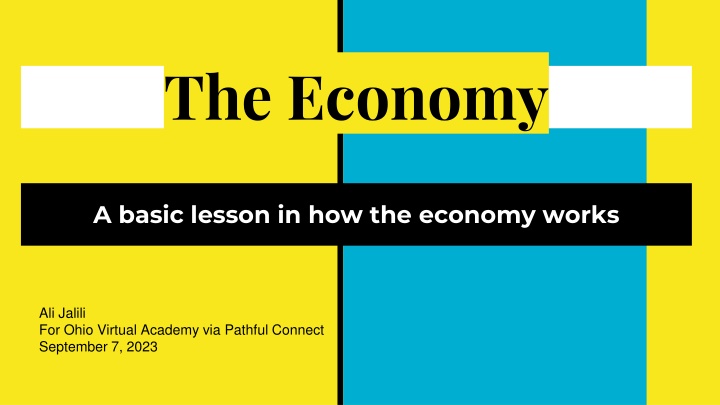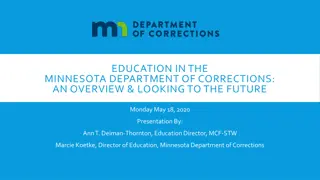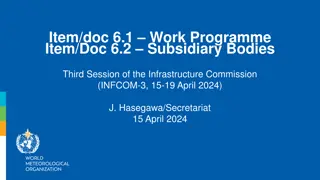
Understanding the Basics of Economy and Economics
Explore the fundamental concepts of economy, economics, types of economies, supply and demand, macroeconomic terms like GDP and unemployment rate, and the role of government in regulating the economy. Learn about microeconomics and macroeconomics, the different types of economies, economic signals in a free market, and key macroeconomic terms.
Download Presentation

Please find below an Image/Link to download the presentation.
The content on the website is provided AS IS for your information and personal use only. It may not be sold, licensed, or shared on other websites without obtaining consent from the author. If you encounter any issues during the download, it is possible that the publisher has removed the file from their server.
You are allowed to download the files provided on this website for personal or commercial use, subject to the condition that they are used lawfully. All files are the property of their respective owners.
The content on the website is provided AS IS for your information and personal use only. It may not be sold, licensed, or shared on other websites without obtaining consent from the author.
E N D
Presentation Transcript
The Economy A basic lesson in how the economy works Ali Jalili For Ohio Virtual Academy via Pathful Connect September 7, 2023
What is the Economy? What is Economics? The Economy - The production and consumption of all the goods and services in a given country. Economics - The study of how those goods and services are produced and consumed. Microeconomics - how individuals behave in the economy Macroeconomics - how the whole economy behaves as a result of individual, business, and government decisions
4 Types of Economies Traditional Economy - doesn t really exist much today outside of isolated villages Pure Command or Planned Economy - doesn t really exist outside of North Korea, but in theory it s an economy where the government controls all economic transactions Pure Free Market Economy - doesn t really exist, but in theory it s an economy where all economic transactions are free of any government control Mixed Economy - is what virtually every country in the world has and is an economy with a mix of government control and free markets. The U.S. is a mixed economy that leans more free-market. Most European countries, for example, rely more on public services, especially in health and education.
Supply and Demand https://commons.wikimedia.org/wiki/File:Simple_supply_and_demand.svg
Economic signals in a free market The price signal tells producers to make more of something. How does the price move? It depends on demand - if demand is high, people are willing to pay more for something they want, pushing the price higher, and giving producers the signal to produce more. A higher price encourages more supply because the producer can make more money. If a producer is making a lot of money, more producers get into that market. If the demand is low the price drops, producers make less money, some producers get out of the market, and supply drops to meet demand.
Some macroeconomic terms GDP - is the sum total of all the goods and services produced in an economy. Unemployment rate - the percentage of people who want to be working who can t find a job. Inflation - the general increase in prices in an economy.
Role of Government Regulation - to make up for market imperfections (e.g. exploitation of labor, health, environmental, and safety rules, enforce competition) Public goods - to provide things the free market wouldn t provide (e.g. public education, health, infrastructure, justice, etc.) Stabilization of the economy - Unemployment benefits, deposit insurance, etc. Fiscal and monetary policy.


